Running for more than 20 years, the Oregon Star Party Telescope Walkabout promotes telescope making. As a group we walk from telescope to telescope, meeting each builder, listening to their story. What is it about? What works? What doesn't? What would they change next time? Sometimes it is a novel idea, sometimes it is a beginner's first effort. We ask questions as a group, benefiting collectively.
Frustrated by competitions and merit awards at star parties that tend to keep telescope makers secretive and reluctant to discuss the good, the bad and the ugly, plus the challenge of spotting innovative telescopes, finding builders with time to talk, let alone sharing ideas to a wide audience, I came up with the concept of the telescope walkabout. The popularity of the walkabout over the years shows its value to amateurs. Ask yourself if you'd rather be answering judges questions or talking about your telescope to an appreciative crowd of 100+.
The Oregon Star Party has seen the invention and early adoption of flex rockers, string telescopes, Tensegrity tube structures, wire spiders, computerized drive systems, direct drive motors, TrackBalls, SudiBalls, ultra-lights, three large one meter reflectors, super fast sub-F3 reflectors, folding light path reflectors, travel and folding scopes, novel observing accessories, meniscus mirrors, ultra-thin mirrors, Lurie-Houghtons and Schiefspieglers, a number of binoscopes, club scopes and tracking platforms. Especially we take time to celebrate 'first' telescopes made by kids and adults. Invariably there is a fresh take, a new approach or a novel idea.
The builders and their telescopes featured this year: Howard Banich 28 inch with new drive machanics; Don Peckham's improved Tensengrity string design; Rob Brown's helmet mounted 10x50 binoculars; Jonathan Dubay's 10 inch binoculars; Greg Rhodes' 16 inch compact drive system; Randy Beiderwell and Jerry Oltion's Eugene Astronomical Society club 14.5 inch telescope; and Jerry Oltion's six club built equatorial platforms.Mel Bartels talking to the gathering walkabout crowd.
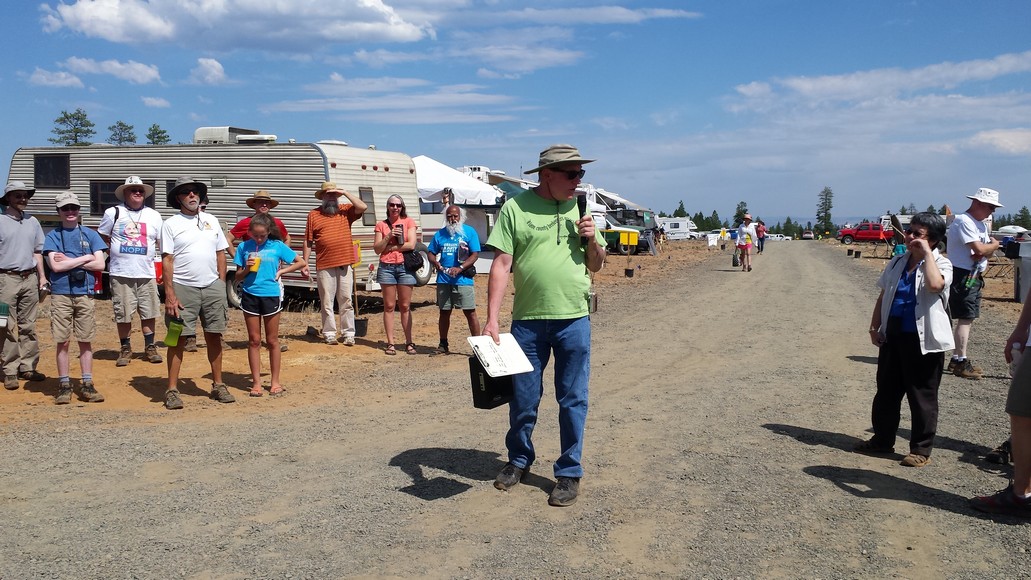
Mark Thorson who took some of the pictures.
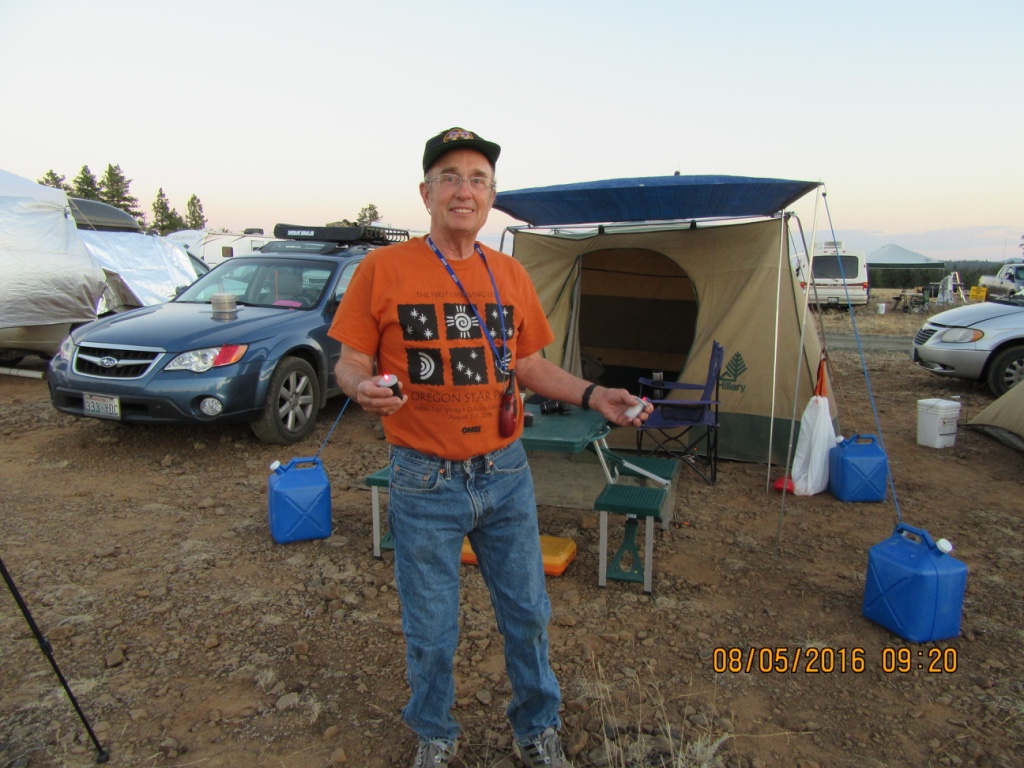
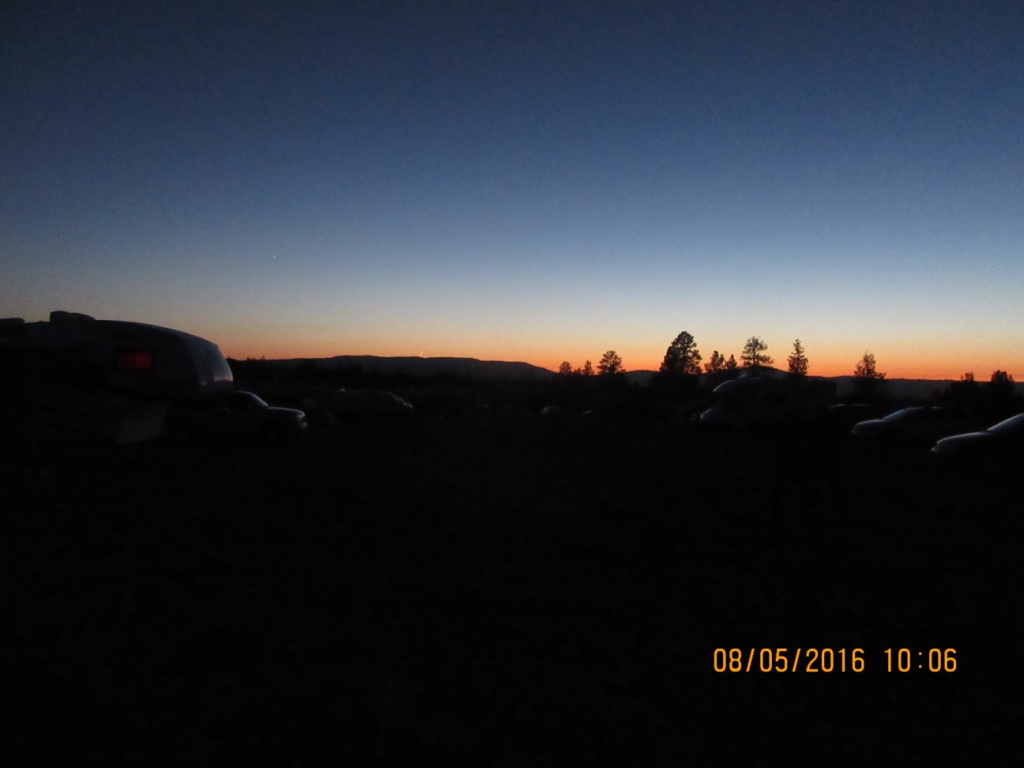
Clouded out one night - pictures by Barbara Bajec.
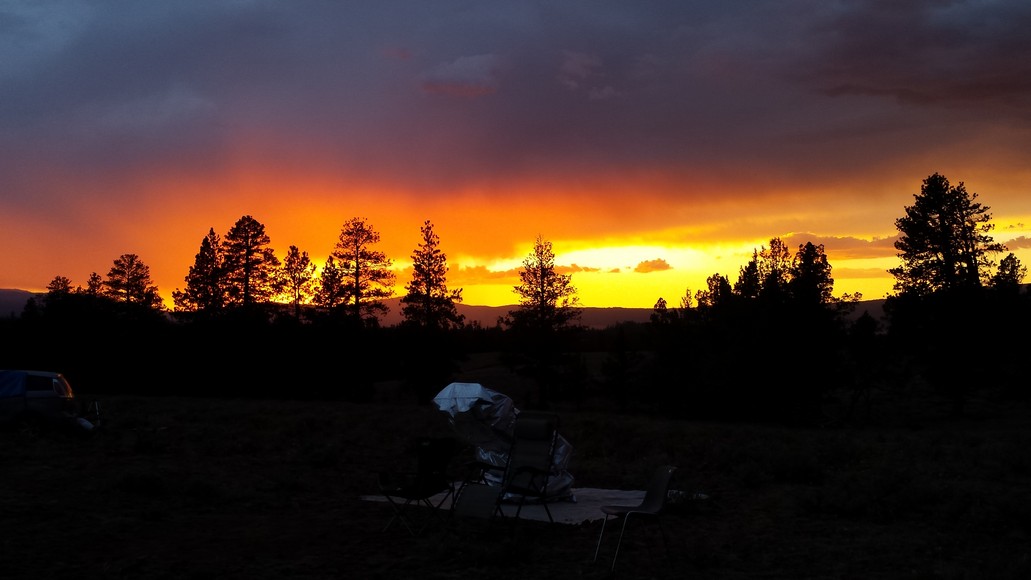
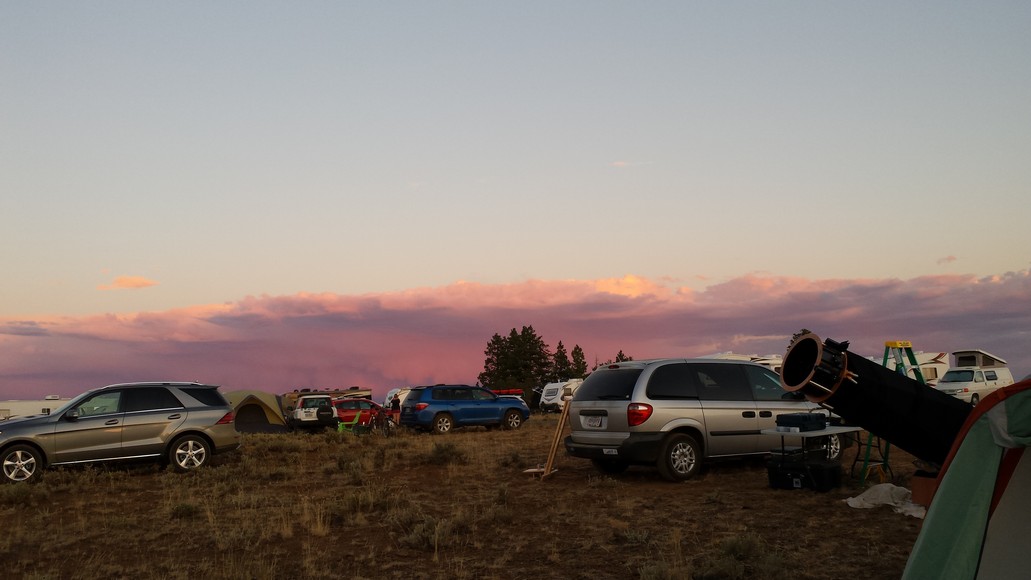
A Portland Oregon resident and Sky and Telescope editor, Howard showed his new drive system that replaces cogs and belts with friction roller drives powered by servo motors connected to harmonic gear reducers and slip clutches. Three years of design resulted in a system that tracks perfectly yet allowing hand movement since Howard is a star-hopper - he does not use the goto features. Howard worked day and night to finish the system in time for OSP. He uses a Sidereal Technology (SiTech) drive system with separate encoders. The 28 inch scope weighs 320 pounds. Howard plans to further fine-tune the system after OSP.
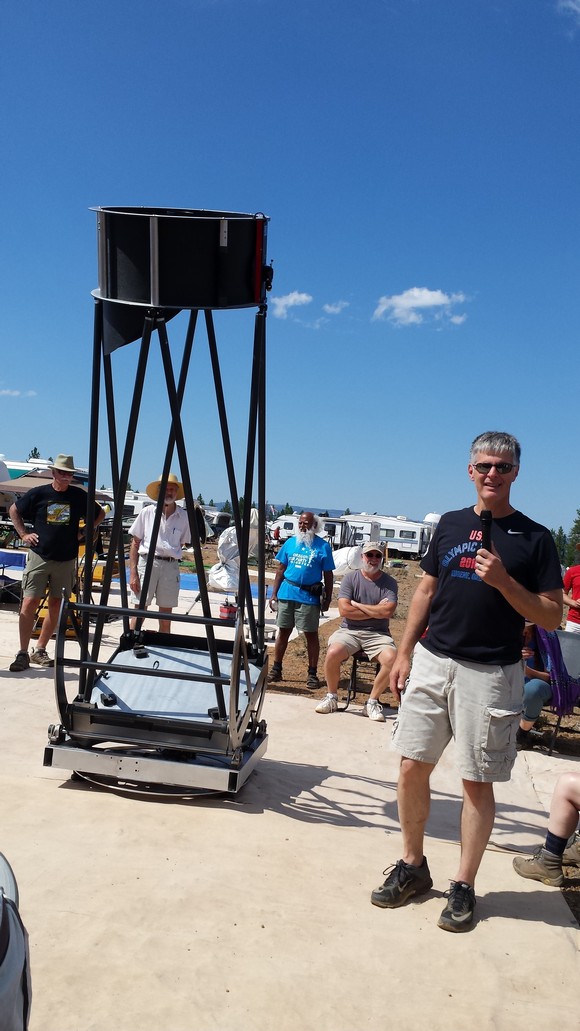
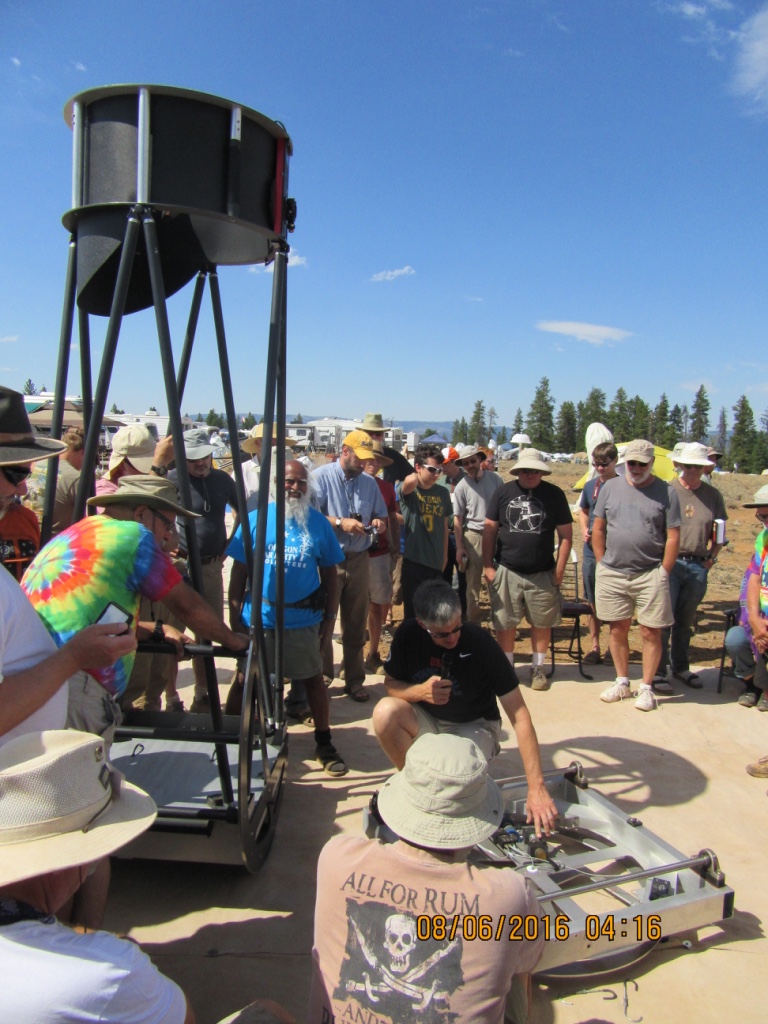
Don has improved upon his groundbreaking Tensegrity string design from last year by moving the square skirts of four tubes inside the truss tubes. The Tensegrity string design's hallmark is that the four parallel truss tubes that connect the mirror box to the upper end work only in compression: the four skirt tube assemblies that give the strings structurally-favorable angles work only in tension. None of the tubes can bend. The telescope is meant to be assembled in the dark without need of re-collimation and travels in a carry-on suitcase. He disassembles the scope two trusses at a time. Don gets his custom aluminum poles from Tent Pole Technologies in Vancouver Washington. He found that carbon fiber tubes are too fragile - they can snap if marred. Don uses 4 wrap bow string. He uses a wire-spider, consistent with the string concept. Don mentions that a four skirt design did not work as well as the two skirt designs and that the mirror box is too lightweight. He will add a cloth cover in the near future.
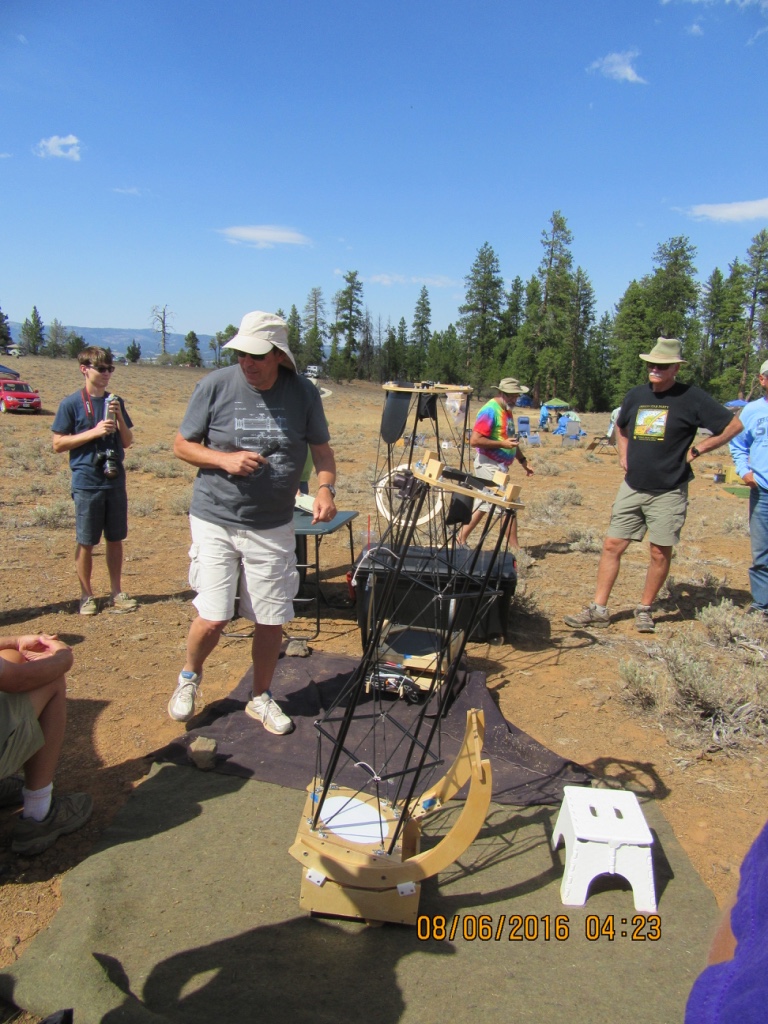
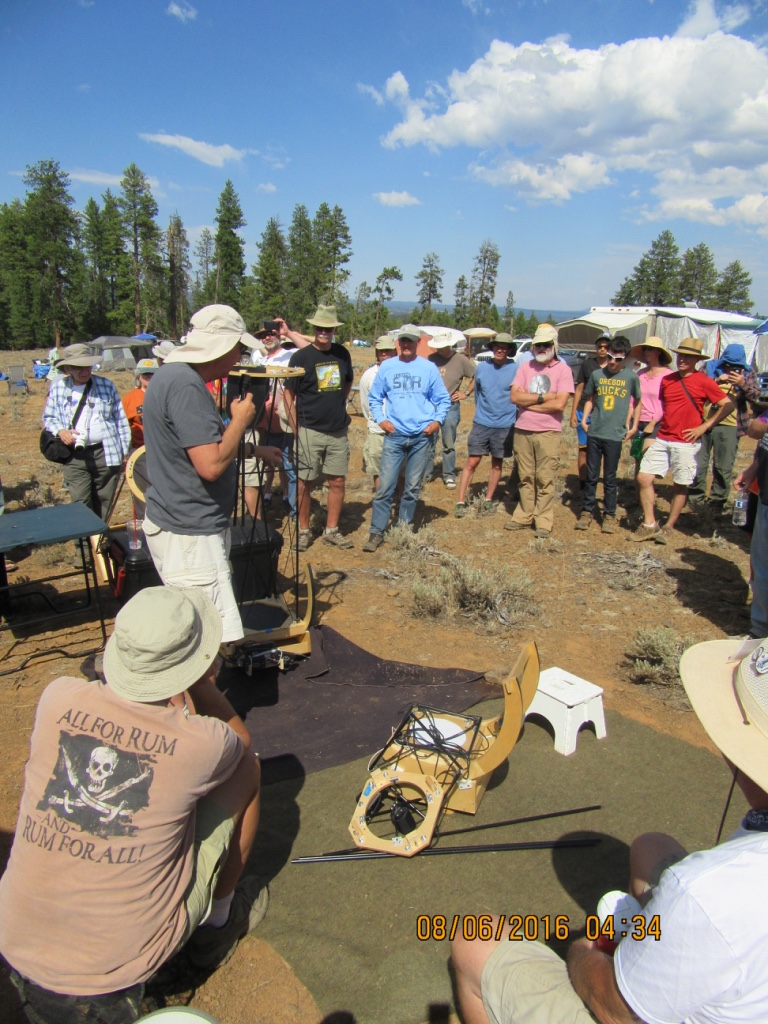
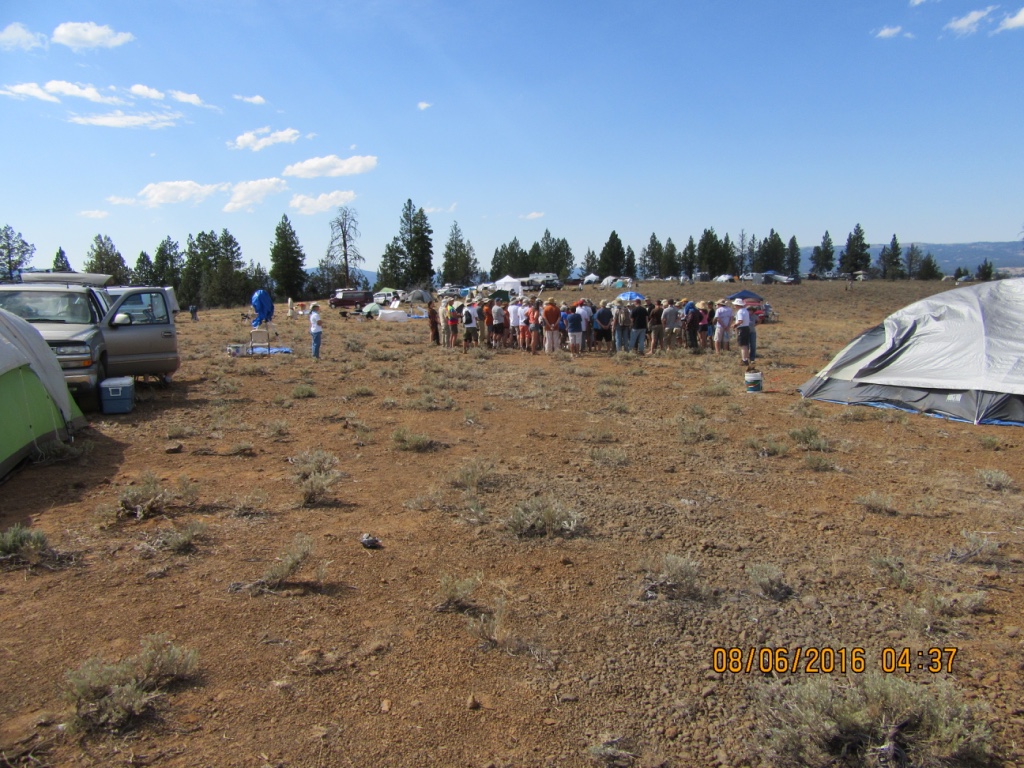
Rob and his son Quinn have developed helmet mounted 10x50 binoculars, inspired by birders. The second helmet has an improved counterweight design consisting of PVC pipe filled iwth 45 slugs. They've found the design unexpectedly good; they can even 'see' their pulse when aimed straight up.
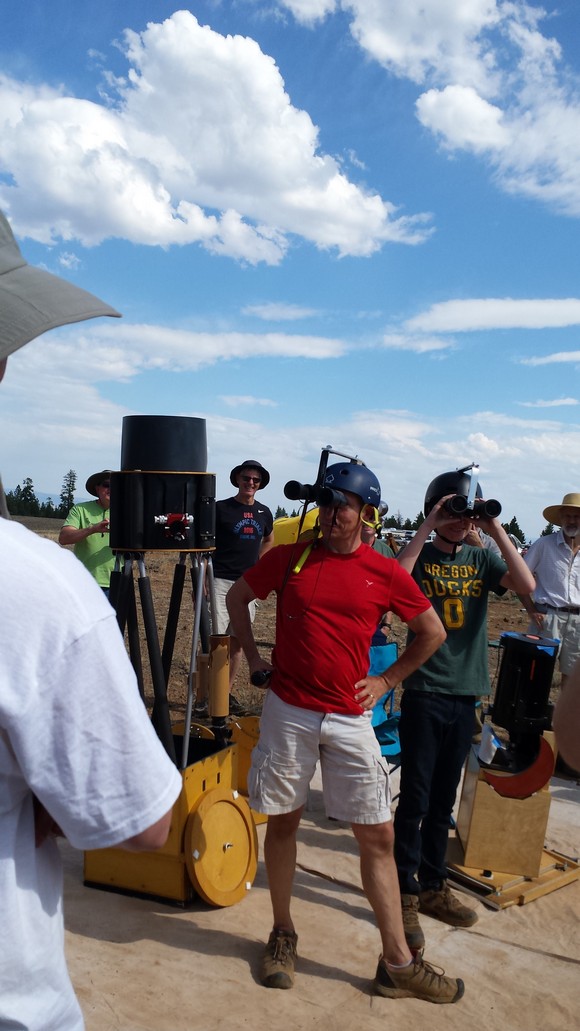
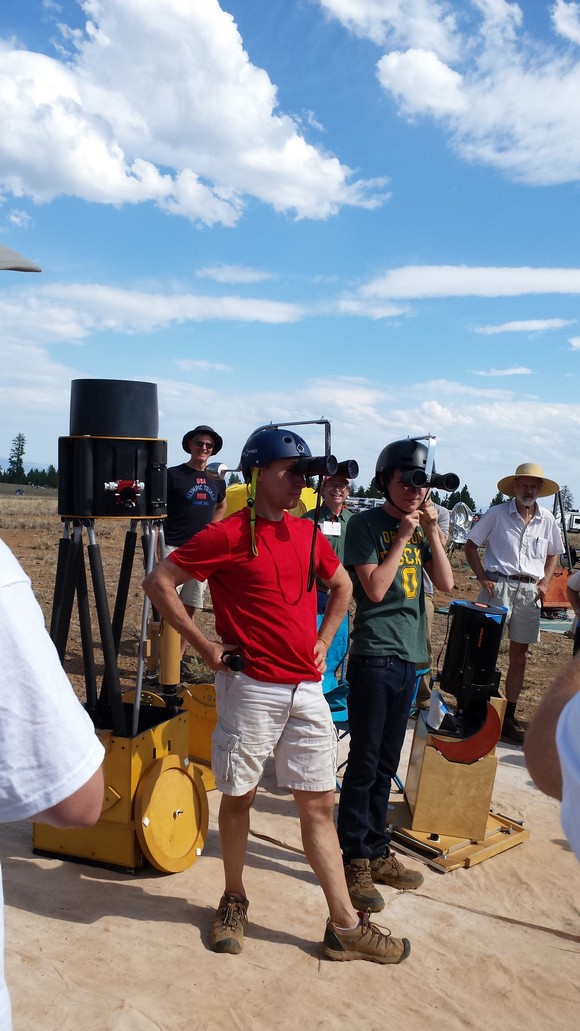
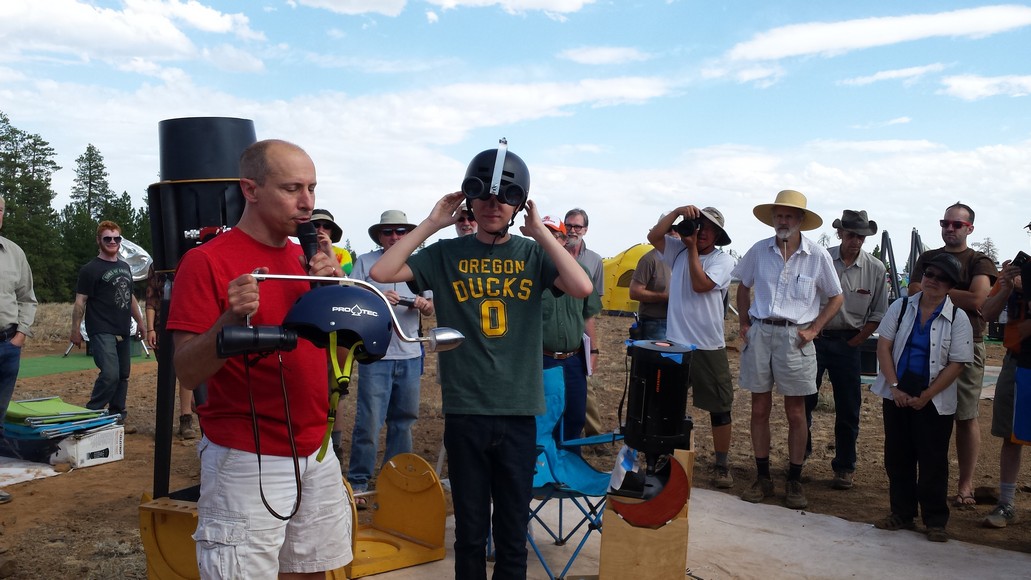
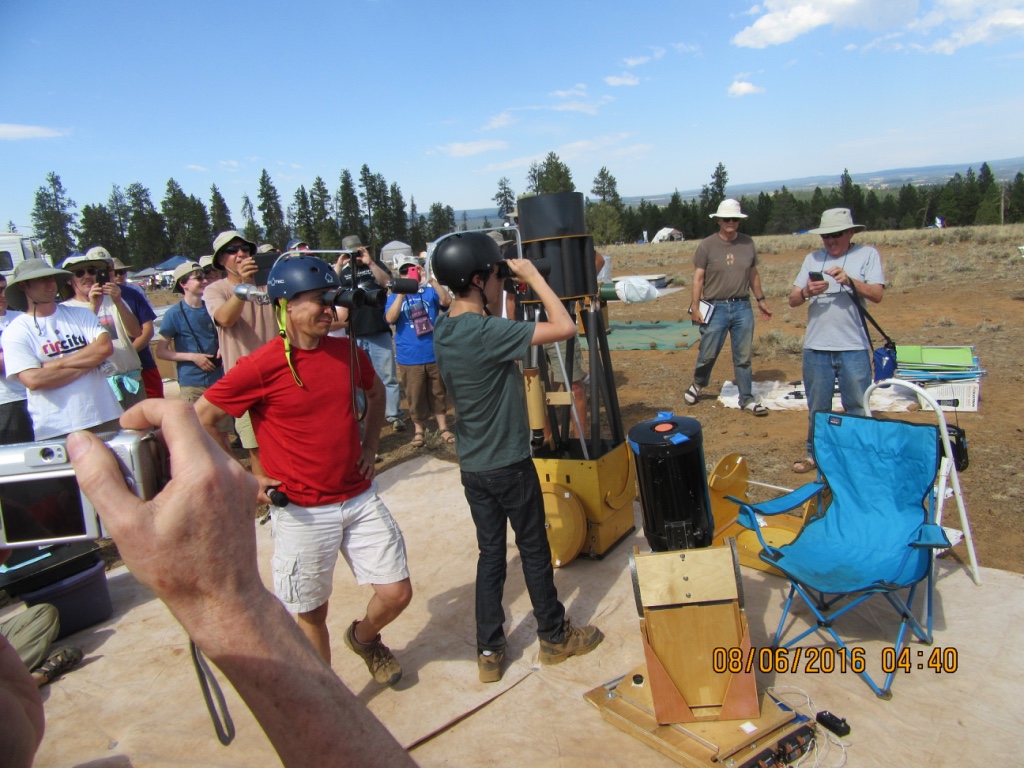
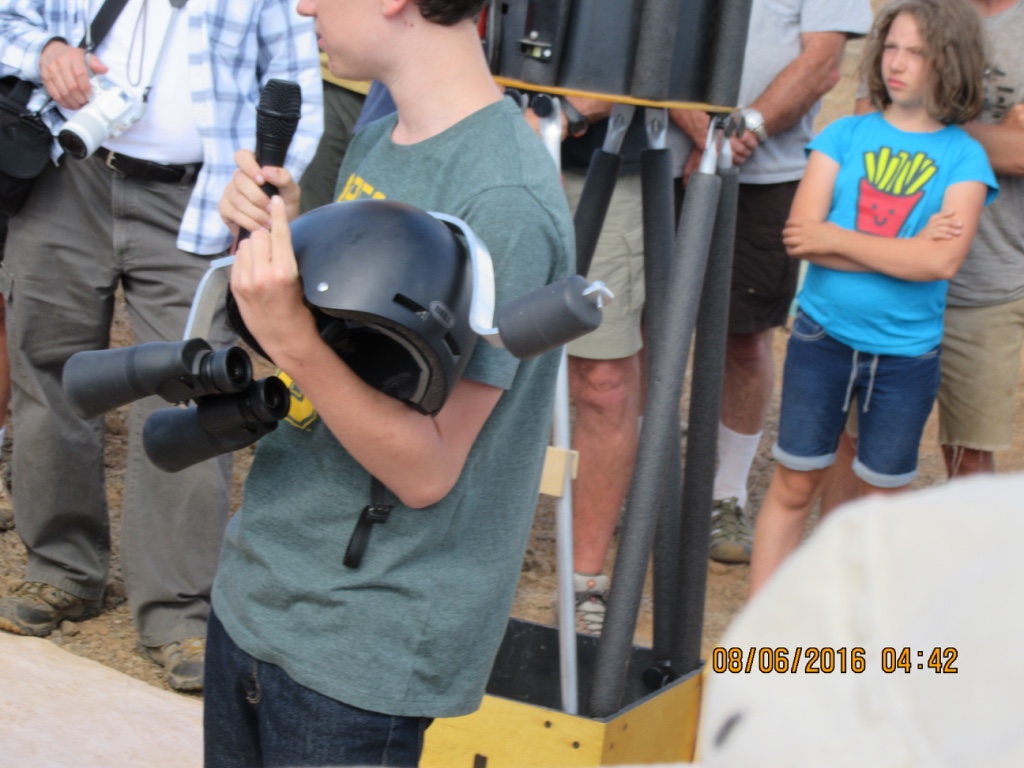
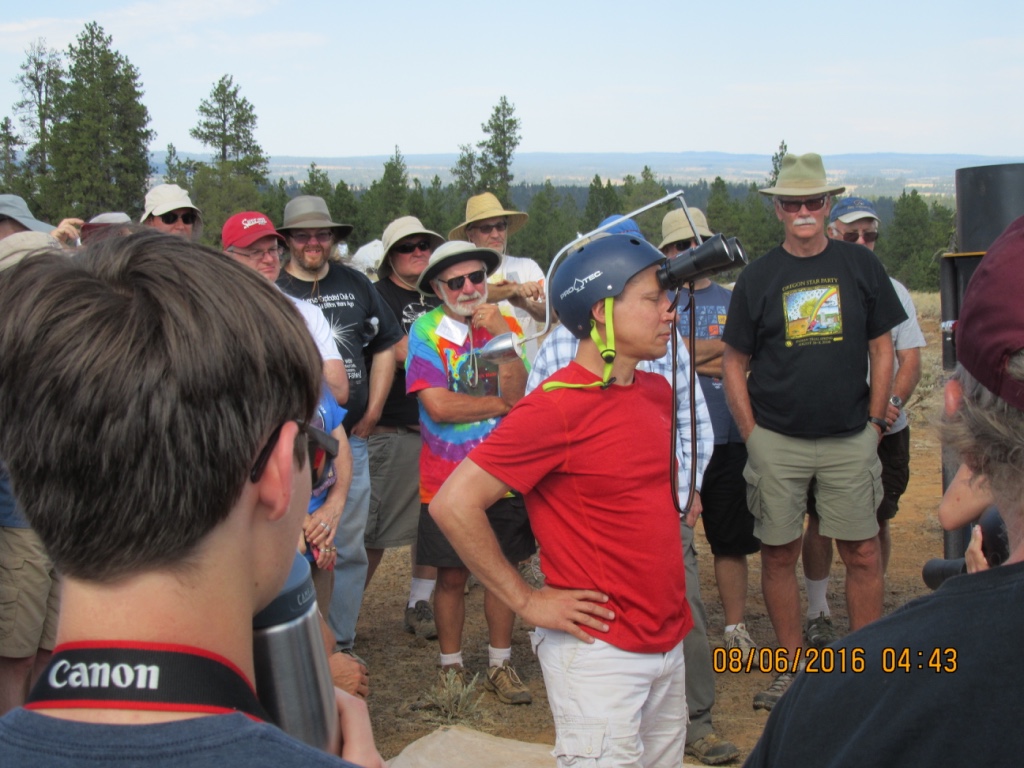
Jon, a violinist, started his reverse binocular telescope last year after seeing Jerry Oltion's 12 inch binocular scope. Jon's bino scope weight 80 lbs and fit into a Prius along with his son and camping gear. The interocular spacing is adjusted by rotating upper rings. The primary mirrors rotate in an ellipse: alignment is achieved at the point where the ellipses overlap. The mirror covers are cut from black buckets. The telescope sits up high on the equatorial table (inspired by Peckham's ET) for easier near-horizon viewing. Jon says that the scope is best for deep-sky viewing: the globular cluster M13 is an inspiring ball of stars. The mirrors are matched to 0.25% in focal length; the eyes can accommodate up to 3% variation. Widefield eyepieces are a challenge for binoscopes - Jon wondered if F4.5 might be better than the current F5. His son built a Peckham Tensegrity telescope. Check out Jonathan's in-depth webpage.
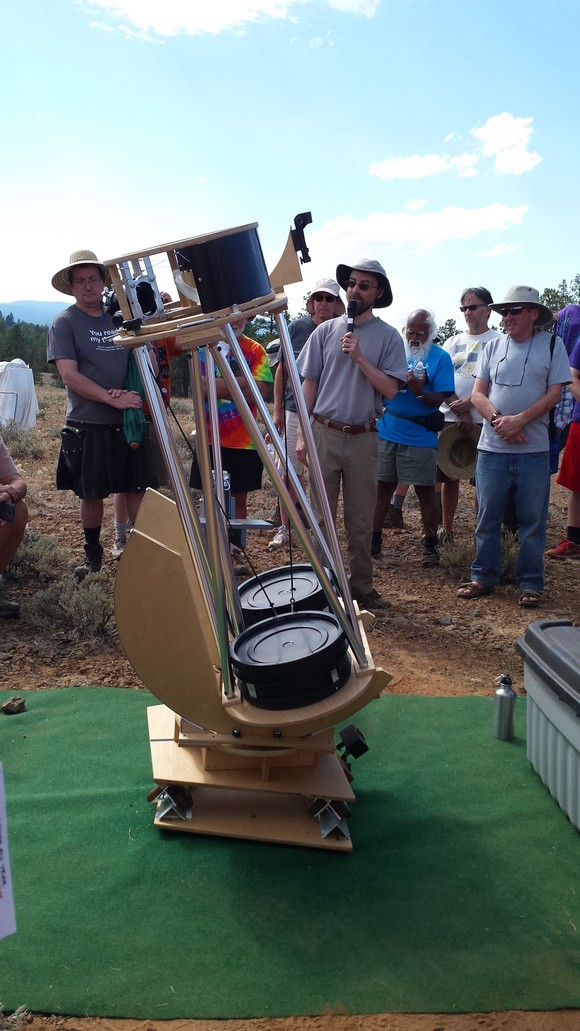
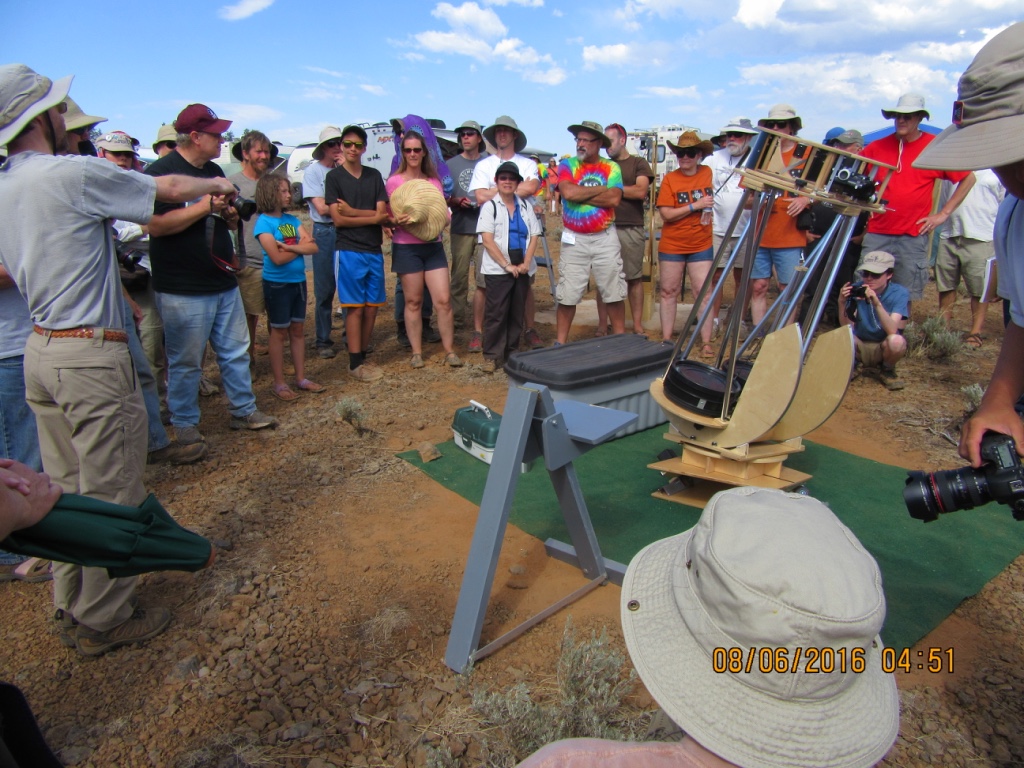
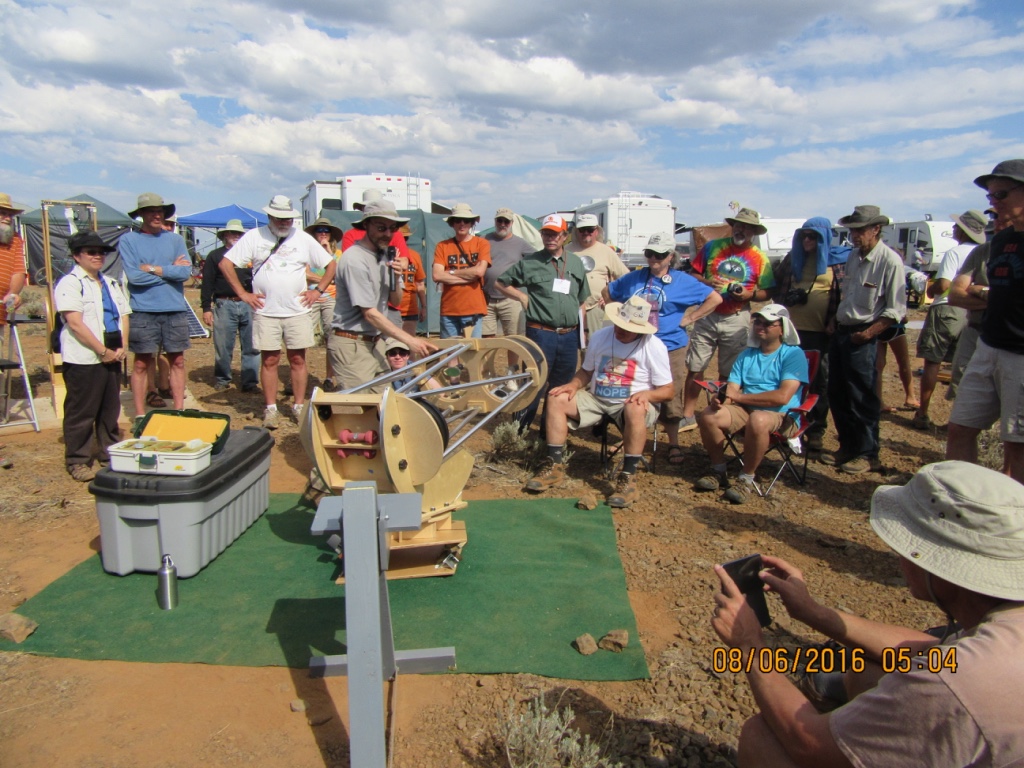
Greg built a finely executed compact drive system that fits into the compact rocker base box. The SiTech drive system was reduced in size to fit the small footprint. The telescope started as a Meade 16" F4.5. Greg has devised a hollow center shaft for good cable management as the scope rotates in azimuth.
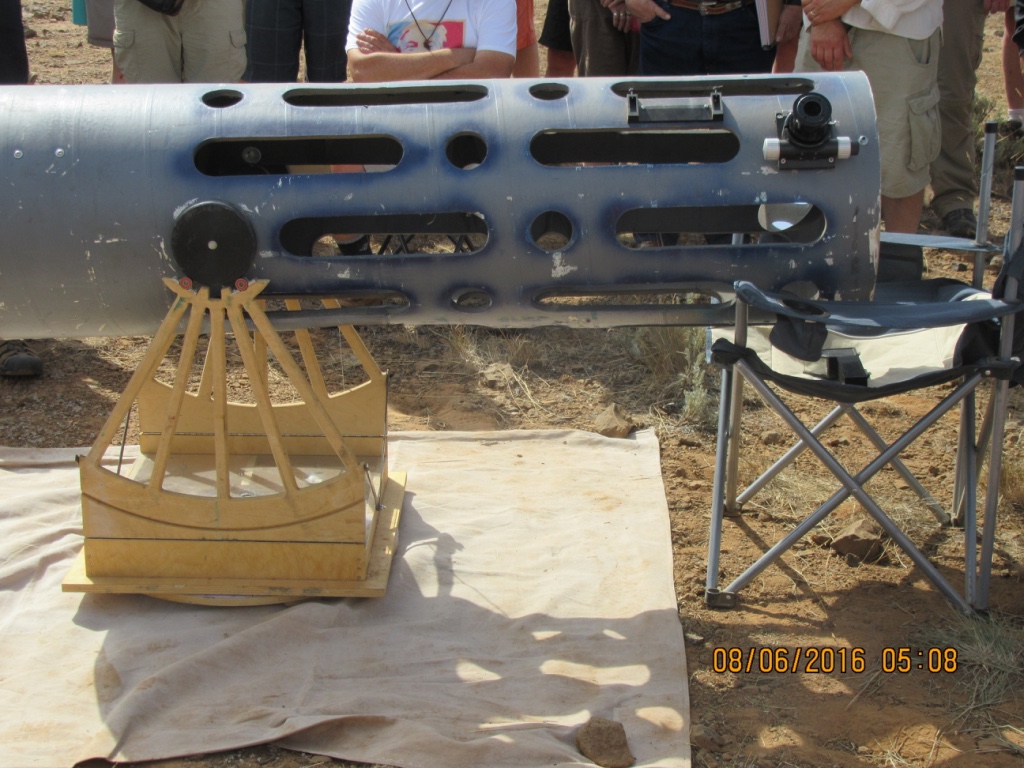
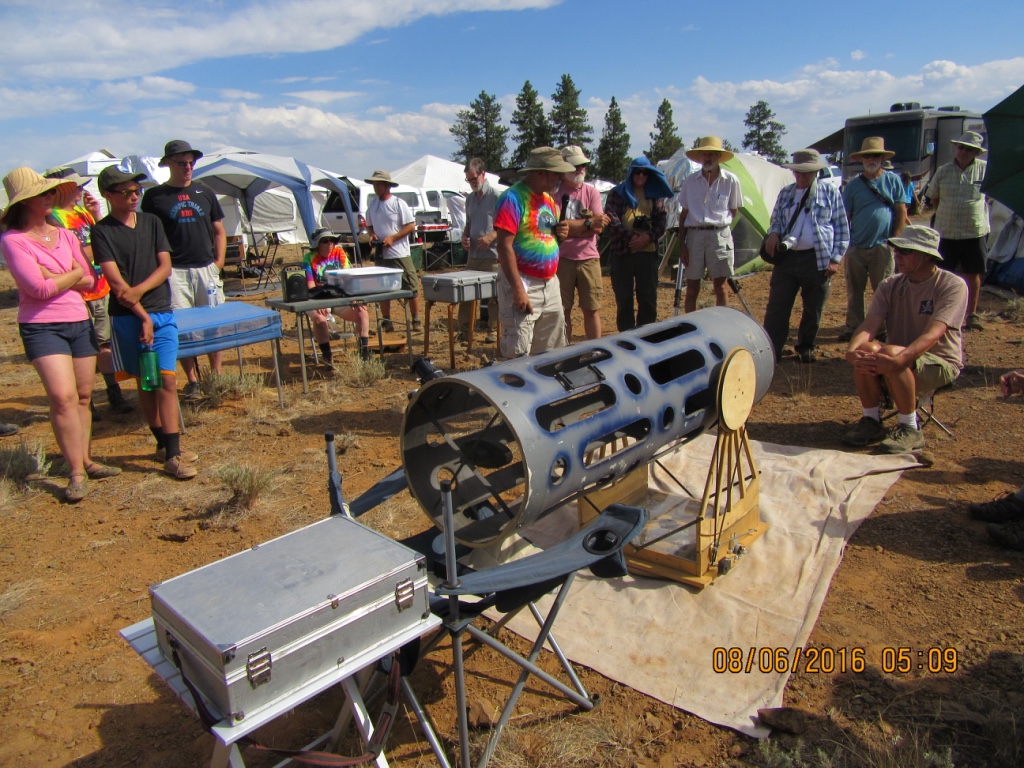
Randy showed off the Eugene Astronomical Society's latest club telescope. The club has a number of scopes in its lending library. This scope, built in Jerry's garage by six people over 15 Sundays, began with the donations of a quartz mirror, mirror cell and equatorial platform. People contributed machining, cut wood with common tools, sewed a shroud and made the spider cut from strapping tape. The scope was designed using Berry's book, "The Modern Dobsonian" and weighs 60 pounds. Good food was provided by volunteers too for the work sessions. The art work was contributed by a Eugene astrophotographer.
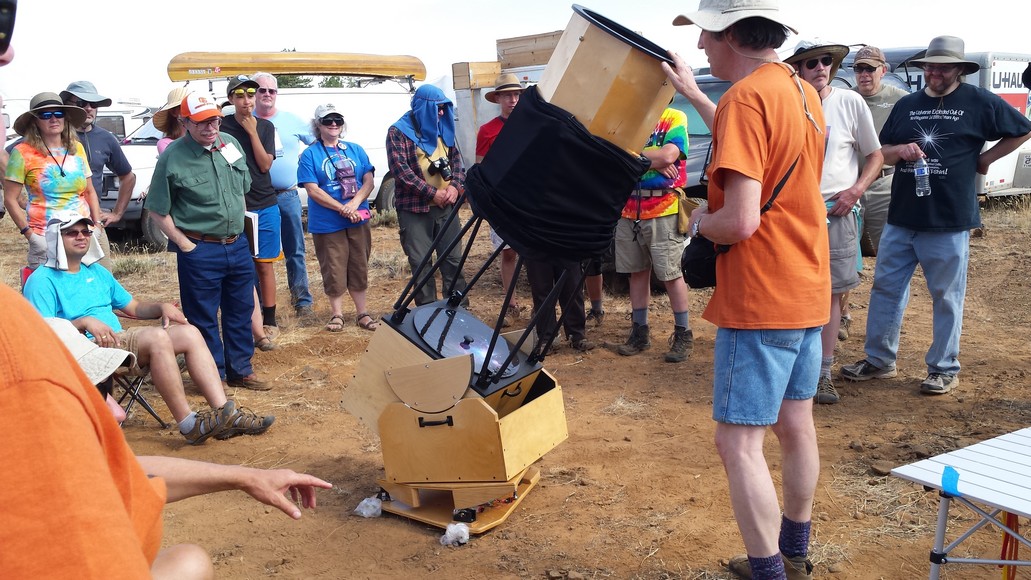
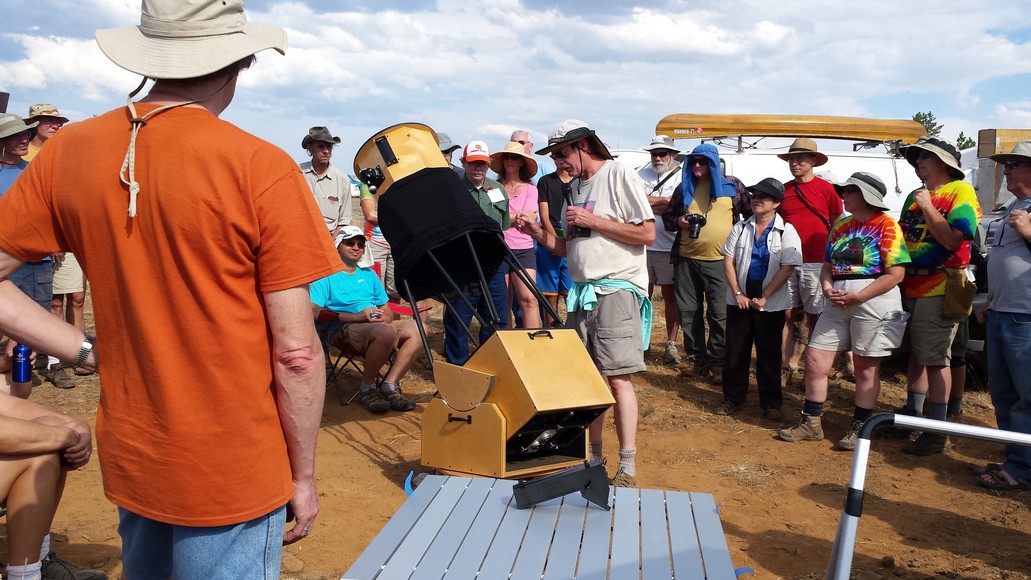
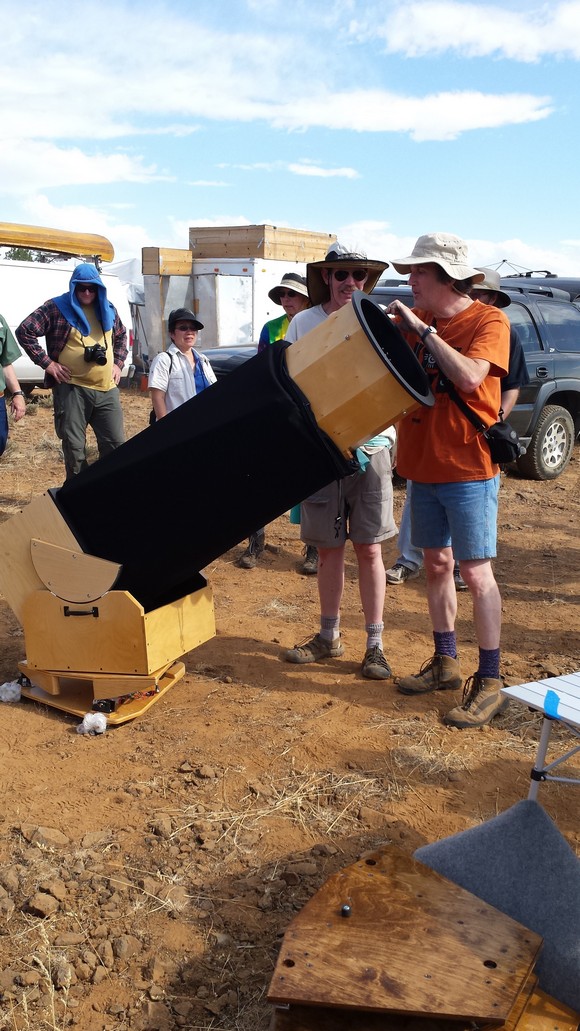
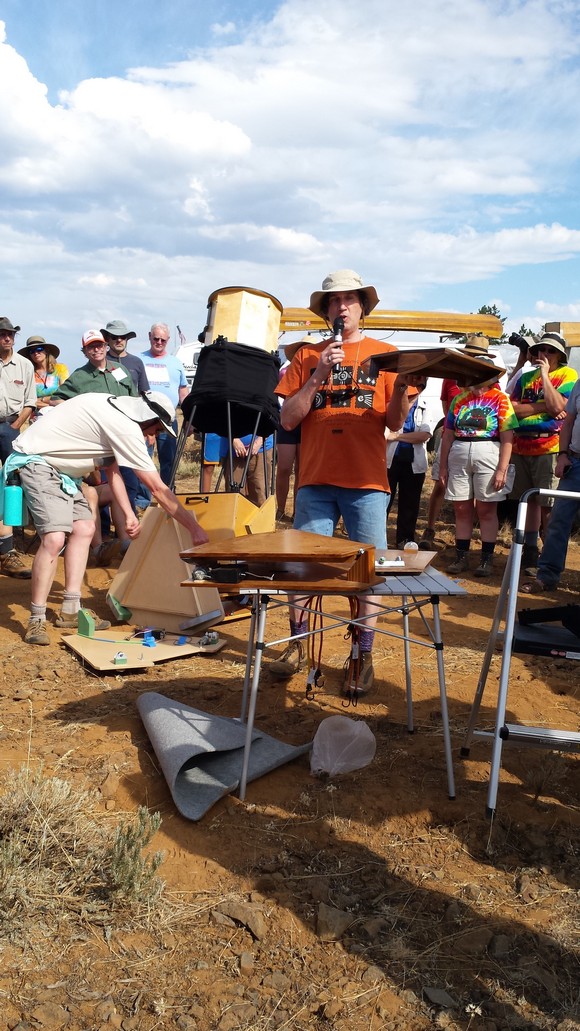
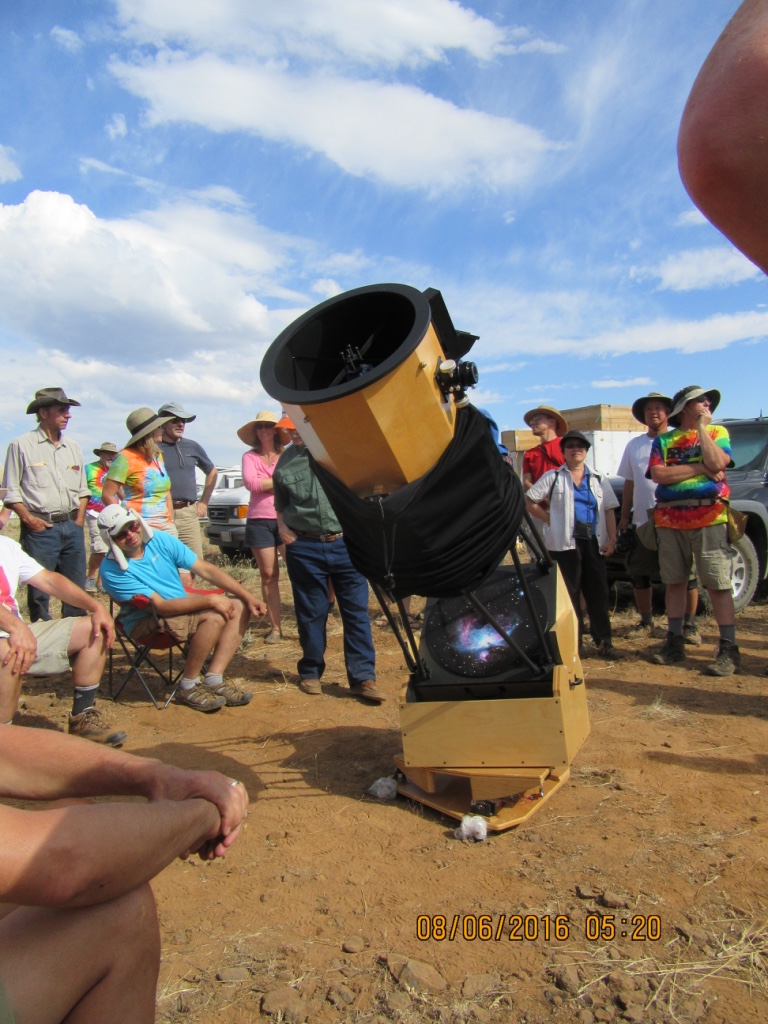
Jerry, the new telescope making editor at Sky and Telescope, heeded the desires of the Eugene club members who wanted to continue after successfully building a club scope. The group decided to make six equatorial tables to add tracking to their Dobsonian altazimuth telescopes. Jerry and the group found designing equatorial tables with the math describing the ellipses and the transfer of the equatorial motion to the vertical arcs challenging. In the end Jerry made a jig with a metal pole aimed along the polar axis. The pole holds a jig that marked out the arcs to be cut. This worked out easily, nicely and accurately. Skateboard wheels ride on steel rulers from Harbor Freight. One of the platforms shown was built with a southern pivot point while the other platform shown was cut short and uses an arc riding on bearings for the southern portion. The drive motor is an inexpensive DC motor ($12) powered by an adjustable drive rate PWM pulse controller ($10) going through a simple gear reduction made from threaded rod. Showing the versatility of the design, a larger table was also shown, suitable for a large telescope. Jerry reports that the platforms track perfectly, and even when misaligned track good enough for high powered visual use.
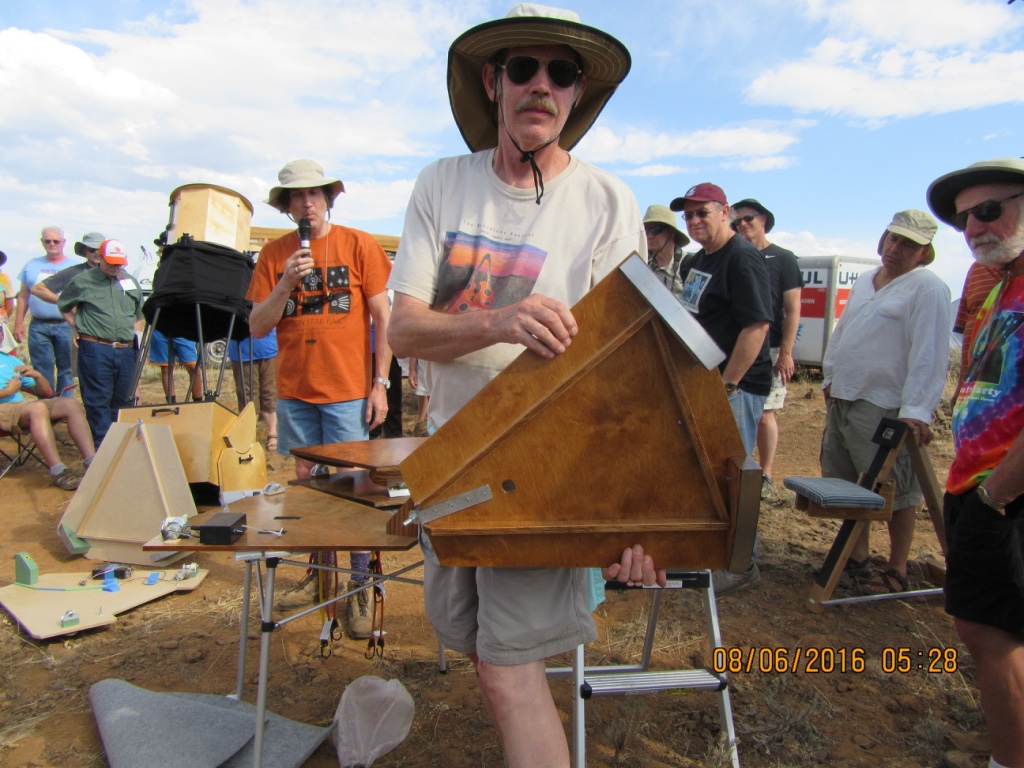
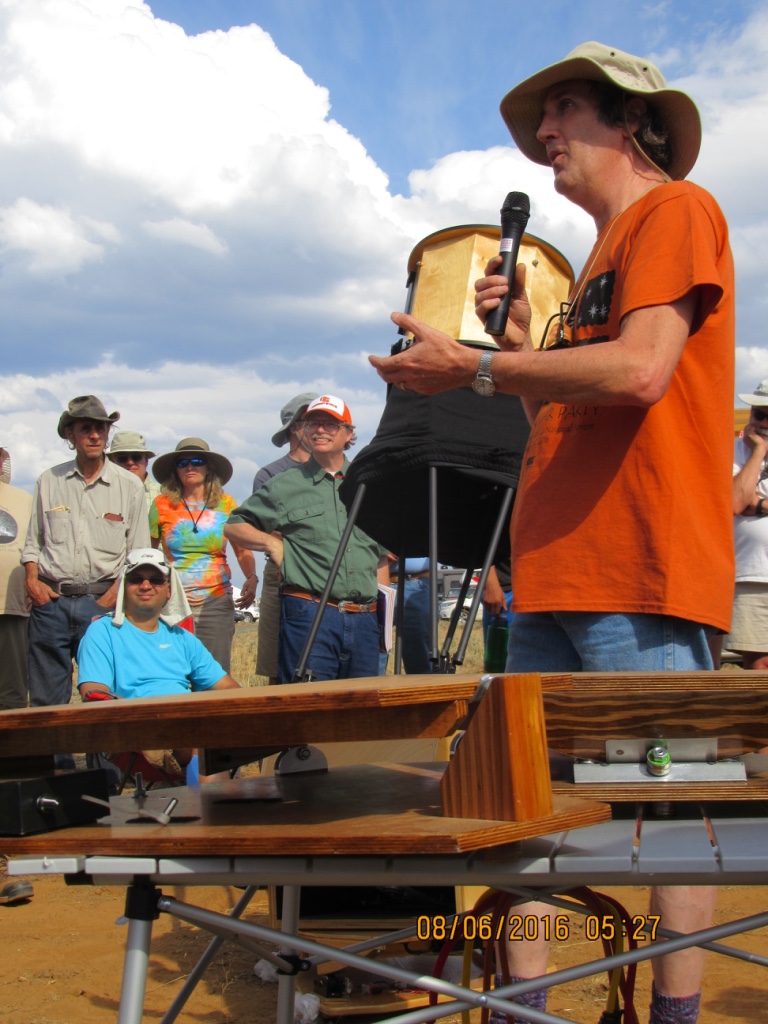
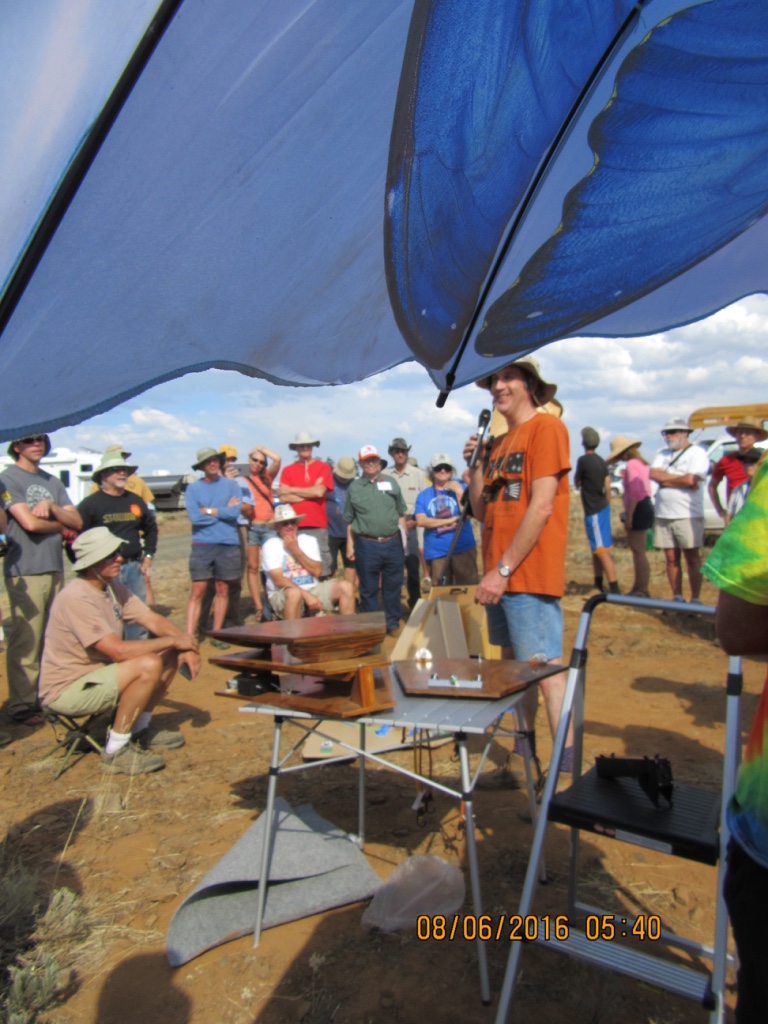
eod